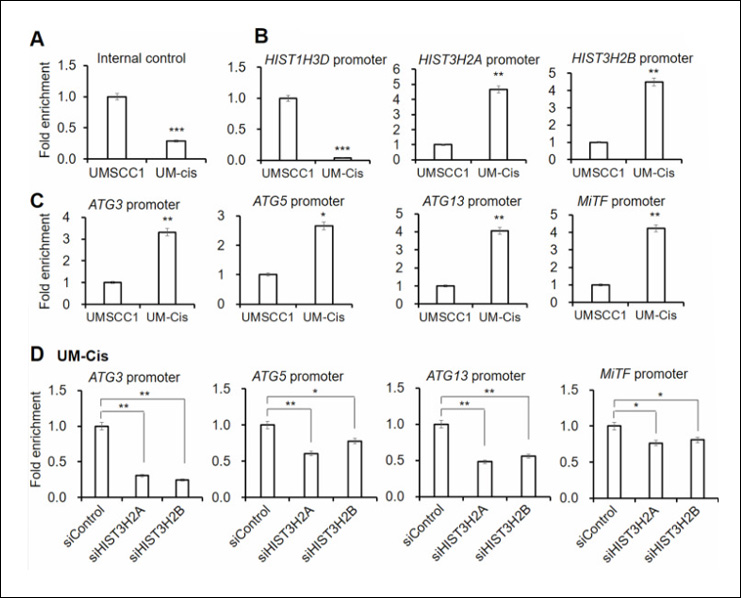Lin R et. al. (April 2025). CPK27 enhances cold tolerance by promoting flavonoid biosynthesis through phosphorylating HY5 in tomato New Phytol.
This study investigates the role of Calcium-dependent protein kinase 27 (CPK27) in enhancing cold tolerance in tomato plants. The research reveals that CPK27, activated by cold stress, phosphorylates HY5, a transcription factor that promotes the biosynthesis of flavonoids, which in turn improves the plant's ability to withstand cold temperatures. These findings elucidate a crucial mechanism by which CPK27 integrates cold signals and flavonoid production to confer cold stress tolerance in tomato.
Products Used: EpiQuik Plant ChIP Kit
Yao Y et. al. (April 2025). Nitric oxide delays tomato fruit softening by inhibiting SlNAP2 (NAC-like, activated by apetala3/pistillata2) transcription factor-activated transcription of soften-related genes Int J Biol Macromol. :143148.
This study explores the mechanism by which nitric oxide (NO) delays tomato fruit softening. The research demonstrates that NO inhibits the transcription factor SlNAP2, which in turn reduces the expression of genes encoding cell wall-degrading enzymes like PG, PME, and cellulase, ultimately postponing fruit softening. These findings reveal a critical regulatory pathway involving NO and SlNAP2 in controlling the ripening process of tomato fruit.
Products Used: EpiQuik Plant ChIP Kit
Liu W et. al. (April 2025). A VqMAPK4-VqGT3-VqNSTS6 module regulates powdery mildew resistance via stilbene biosynthesis in Chinese wild grapevine Plant Physiol.
This study examines the mechanism of powdery mildew (PM) resistance in Chinese wild grapevine, identifying VqNSTS6 as a key stilbene synthase gene. The research reveals that VqNSTS6, upregulated by VqGT3, enhances PM resistance through stilbene accumulation, while a VqMAPK4-mediated feedback loop prevents excessive stilbene production by phosphorylating and degrading VqGT3. These findings uncover a regulatory module that controls stilbene biosynthesis and PM resistance, offering valuable insights for breeding PM-resistant grapevines.
Products Used: EpiQuik Plant ChIP Kit
Oikonomidi I et. al. (April 2025). Interferon regulatory factor 4 mediates nonenzymatic IRE1 dependency in multiple myeloma cells PLoS Biol. 23(4):e3003096.
This study investigates the nonenzymatic role of IRE1 in promoting the proliferation of multiple myeloma (MM) cells. The research identifies interferon regulatory factor 4 (IRF4) as a crucial downstream mediator, showing that IRE1 silencing leads to inhibitory phosphorylation of IRF4, disrupting its transcriptional activity and consequently hindering cell-cycle progression. These findings reveal a novel IRE1-IRF4 axis that is essential for MM cell proliferation, offering new insights into the disease's biology.
Products Used: MethylFlash Global DNA Methylation (5-mC) ELISA Easy Kit (Colorimetric)
Zhang H et. al. (April 2025). Electroacupuncture Serum Alleviates Ogd/R-Induced Astrocyte Damage by Regulating the AQP4 Via m6A Methylation of lncRNA MALAT1 Zhang H et. al. (April 2025).
This study explores the protective effects of electroacupuncture (EA) serum on astrocytes damaged by oxygen-glucose deprivation/reoxygenation (OGD/R), an in vitro model of ischemic stroke. The research demonstrates that EA serum alleviates astrocyte damage by downregulating aquaporin 4 (AQP4) expression, a process potentially mediated by reduced m6A methylation of lncRNA MALAT1 and decreased METTL3 levels. These findings suggest that EA may exert its neuroprotective effects on astrocytes through epigenetic mechanisms involving m6A modification of MALAT1 and subsequent AQP4 regulation.
Products Used: EpiQuik m6A RNA Methylation Quantification Kit (Colorimetric)
Lu L et. al. (April 2025). Role of METTL16 in PPARγ methylation and osteogenic differentiation Lu L et. al. (April 2025).
This study investigates the role of METTL16 in regulating PPARγ methylation and its impact on osteogenic differentiation of bone marrow-derived mesenchymal stem cells (BMSCs) in the context of osteoporosis. The research demonstrates that METTL16 promotes m6A methylation of PPARγ, which in turn induces ferroptosis in BMSCs and inhibits their differentiation into osteoblasts, ultimately contributing to osteoporosis development in mice. These findings identify the METTL16-PPARγ axis as a critical regulatory mechanism in bone homeostasis and a potential therapeutic target for osteoporosis.
Products Used: EpiQuik m6A RNA Methylation Quantification Kit (Colorimetric)




 Cart (0)
Cart (0)













